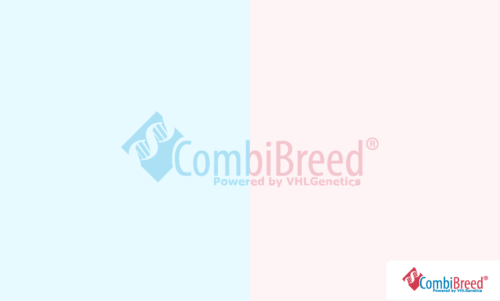Dwarfism ACAN D1, D2, D3*, D4 and D5
Miniature horses with chondrodysplastic dwarfism (ACAN dwarfism) are significantly shorter than expected for their age. The ACAN gene encodes a proteoglycan essential for normal cartilage and bone development, and mutations in this gene cause varying degrees of skeletal dysplasia in horses. Horses with skeletal dysplasia typically exhibit disproportionately short limbs and necks, bowed forelegs, a compressed face with bulging eyes, a pronounced underbite, a cleft palate, a protruding tongue, and abdominal hernias.
The D1 variant is the only one associated with lethality—foals that are homozygous (D1/D1) do not survive, typically resulting in early embryonic loss. However, combinations of D1 with other ACAN variants (such as D1/D2, D1/D3*, or D1/D4) are not always lethal, but if foals are born alive, it leads to severe, viable forms of dwarfism, characterized by shortened limbs, joint deformities, and a domed skull. Due to these deformities animals with these genotypes are often euthanized due to severely diminished quality of life.
The D2, D3*, and D4 variants of the ACAN gene, whether in homozygous or compound heterozygous (a combination of any two mutations) form, result in non-lethal dwarfism of varying severity, with D2 generally producing the mildest phenotype.
In 2023, a study performed by Eberth at the University of Kentucky found eight horses with a dwarfism phenotype in a specific American Miniature Horse population with only one allele for D2, D3*, or D4. This suggested that there are additional ACAN alleles that cause dwarfism. From this research, the D5 variant (D5kyR; g.95258999 C>T) emerged as a causal variant in that group alongside the already known dwarfism variants D1-D4. As with the D2, D3*, and D4 variants, carriers of D5kyR may appear slightly smaller than average but are typically clinically healthy. Another mutation, also called D5bR or the Brazilian haplotype, was discovered by Andrade et al (2020). At first it was thought that this mutation was also causal for the dwarf phenotype, but later Eberth (2023) proved that this mutation is not causal, at least not in the American population. Because there is an association between this mutation and dwarfism, but no causality is proven, this mutation should be seen as a risk factor. The D5bR mutation is currently not available at CombiBreed.
Inheritance
Dwarfism in (miniature) horses is an autosomal recessive condition, where horses that possess two of the five known ACAN variants (D1, D2, D3*, D4 and/or D5) always exhibit dwarfism. This means that both a miniature horse that is homozygous (affected) as well as a miniature horse that is carrier of two different ACAN mutations will display the ACAN dwarfism.
Additional information
More information about D5 is available in the publication: MOLECULAR GENETIC STUDIES OF HORSES, ESPECIALLY WITH REFERENCE TO AGGR” by John Edmund Eberth (uky.edu)
*D3 is improved
Relevant tests
- P306
- P332
- P380
